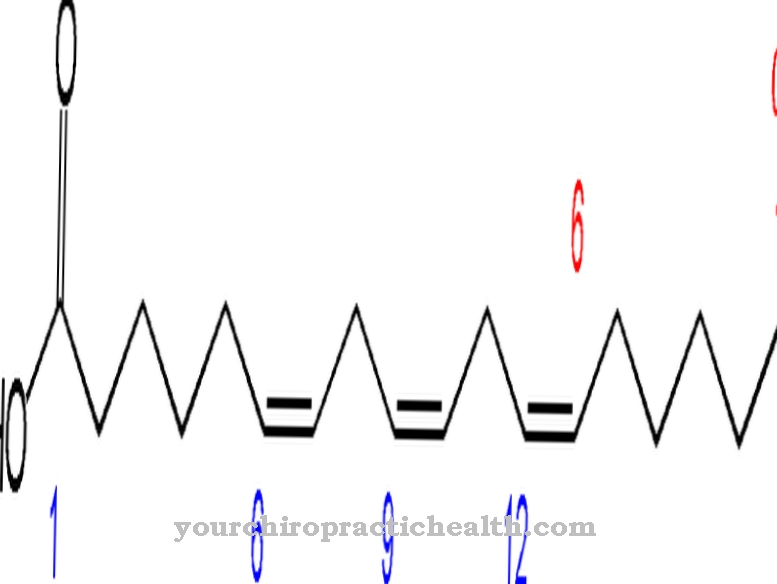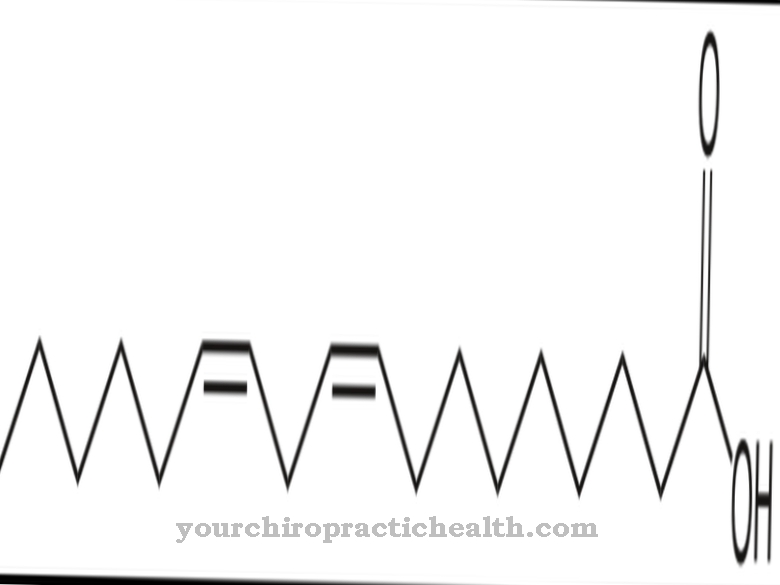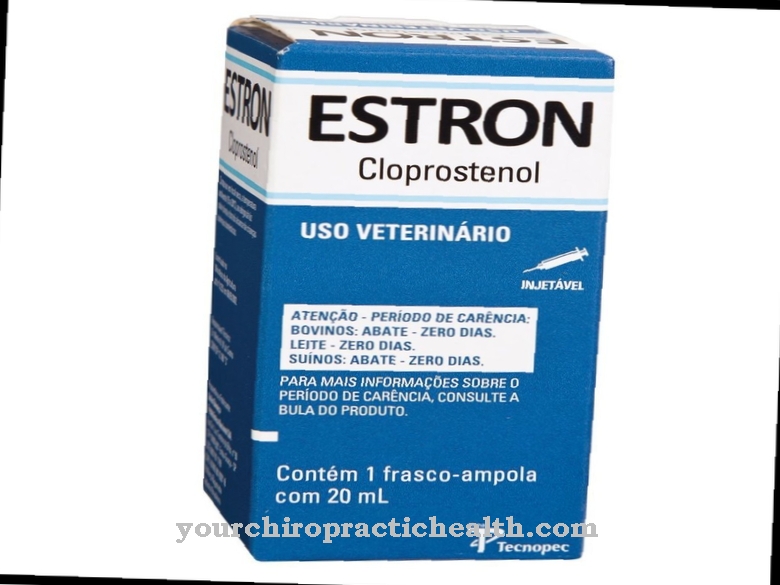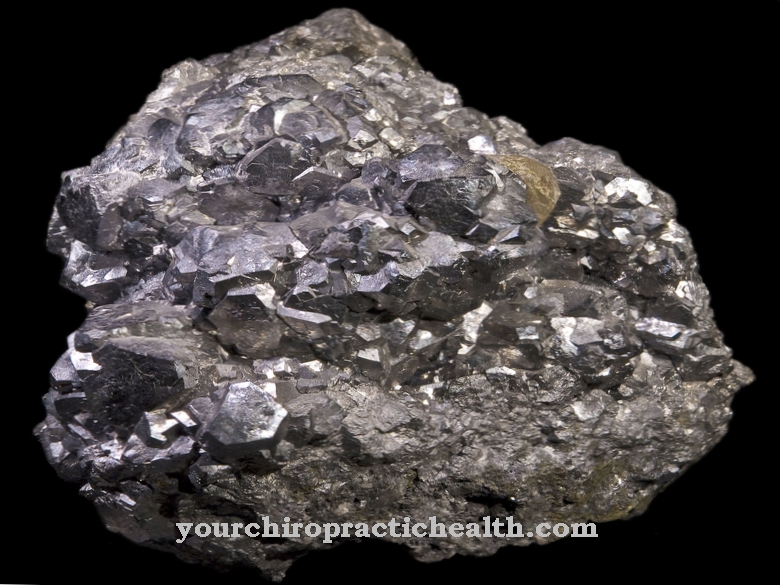Betaine is a quaternary ammonium compound with three methyl groups and is found in many plants. It serves as an adjuvant in numerous biological processes. The medicine uses betaine among other things to treat heart diseases and certain lipid metabolism disorders.
What is betaine?
Betaine is a quaternary ammonium compound with the empirical formula C5H11NO2. A quaternary ammonium compound is characterized by the fact that four organic substances bind to a central nitrogen atom, which chemistry identifies as residues.
This has reached the maximum number of bonds for the nitrogen atom. The residues can be assigned differently, which gives the molecule its final properties. In the case of betaine, three of the places are occupied by methyl groups.
Methyl groups are the simplest compounds based on carbon; chemistry refers to such groups as organic compounds. The methyl groups in betaine serve as methyl donors: they release the methyl groups to other molecules, for example in the context of the synthesis of certain amino acids. Since methyl groups are inherently very inert, enzymes or other biochemical auxiliaries accelerate this reaction in the human body.
Betaine is not identical to the group of substances called betaines - but their structure is similar. Betaine is also known under the names glycyl betaine, glycine betaine, N, N, N-trimethylglycine and N, N, N-trimethylammonioacetate. It is readily soluble in water and is in its pure form in the solid state of aggregation. Betaine only melts at 301 ° C.
Function, effect & tasks
Betaine plays a role in various biological processes in the human body. Since it has three methyl groups, it serves as a methyl donor, for example. Such a substance releases one or more methyl groups to another molecule. This step occurs, for example, in the synthesis of various amino acids. Biology also describes the process as the transmethylation process.
During transmethylation, betaine releases at least one of its methyl groups to another molecule. This molecule has a biological function in the organism; therefore biology also speaks of natural substances or biomolecules. Since methyl groups are very inert, an enzyme has to help with the reaction: Methyltransferases catalyze the transfer of the methyl groups. Betaine does not only act as a methyl donor, but also as a methyl acceptor. It also receives methyl groups during its synthesis before it can later pass them on. In addition to betaine, choline, creatine, methionine and others can also be used as methyl donors.
Betaine doesn't just seem to be of use in medicine; some studies show that the additional intake of betaine leads to an improvement in performance in athletes. Betaine may have effects on lipid metabolism. The exact mechanisms behind this are still largely unknown.
Education, occurrence, properties & optimal values
Betaine owes its name to the Latin word “beta”, which means “beet”: Betaine is not only found in large quantities in these plants, scientists also isolated it from sugar beet for the first time. However, betaine can also be found in other plants. With a balanced diet, people usually consume sufficient betaine with the usual diet.
People with an increased need for betaine can take the substance as a dietary supplement. Studies show that the absorption of betaine from dietary supplements is as good as it is from natural foods. However, betaine can be toxic in large quantities. In animal experiments, the LD50 for mice was 830 mg per kg body weight. The LD50 indicates the dose at which half of the animals died. According to Cholewa, Guimarães-Ferreira and Zanchi, doses of 500 - 9000 mg per day were used as part of medical treatments. People with certain lipid metabolism disorders often have abnormal betaine concentrations in their urine.
Diseases & Disorders
Doctors use betaine, among other things, to treat liver diseases - as well as heart attacks and some other cardiovascular diseases. Bacteria can also form the substance. There is evidence that the tuberculosis pathogen uses betaine to infect human cells.
In the form of betaine hydrochloride, betaine is also used in the treatment of hyperlipemia. With hyperlipemia, the amount of triglycerides in the blood is increased. Triglycerides are also called neutral fat or triacylglycerine. These compounds of glycerine and fatty acids can cause arteriosclerosis: the fats are deposited in the bloodstream and constrict the vessels. Complete closure is possible. The blood flowing by allows the deposit to loosen and move through the body. If it doesn't dissolve, there is a risk that the fat deposit will stick to bottlenecks or in smaller arteries. The blood cannot pass through the seal.
Cells lying behind cannot receive any or insufficient nutrients and respiratory gases. Atherosclerosis can lead to heart attack, stroke, or pulmonary embolism, depending on where the deposit is. Other complications are also possible; they are less serious and may not pose an immediate threat, but they should be taken seriously and can also damage tissue and organs. The same clinical picture as in hyperlipemia is also seen in hypertriglyceridemia. Betaine is also linked to other lipid metabolism disorders.
People who make too little stomach acid can potentially take advantage of drugs containing betaine to supplement the missing acid. The regularity of intake and the exact dose can vary greatly in individual cases; the attending physician must therefore carefully estimate the optimal amount of betaine. Potential side effects include loss of appetite, hair loss, skin changes, brain edema, restlessness, sleep disorders and psychological changes.

























.jpg)


